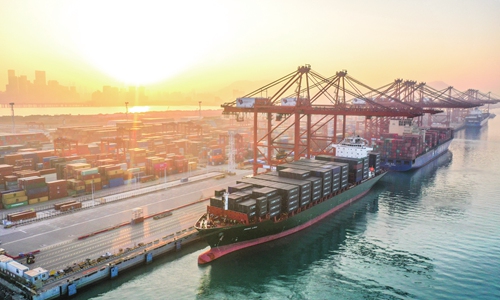The data released by China’s National Bureau of Statistics (NBS) on Monday showed that the country’s gross domestic product (GDP) for the first half of this year reached 59.3034 trillion yuan. Calculated at constant prices, it grew by 5.5 percent year-on-year. This growth rate is faster than the 3 percent annual economic growth rate of the previous year and the average 4.5 percent growth rate over the three years during the pandemic, making it the fastest among major global economies based on published data. Due to the significant role of the Chinese economy, the International Monetary Fund (IMF) predicts that China will contribute about one-third of global economic growth this year. Therefore, in the context of a sluggish global economy, the Chinese economy has demonstrated strong resilience and sustained healthy development, which is of great global significance.
The world is closely watching China’s economic data and conducting various analyses and predictions around it, which is quite normal. With its enormous size, China’s economic development trajectory has reached a point where it can significantly impact the global economy. China remains one of the fastest-growing major economies, and according to IMF forecasts, it will be the largest contributor to global economic growth in the next five years, with its share of contribution expected to reach 22.6 percent of the total world GDP growth, twice that of the US. Therefore, in the current complex domestic and international environment, it is crucial to objectively, comprehensively, and dialectically assess the Chinese economic situation to avoid misunderstanding and misjudgments.
In terms of the first half of this year, although the Q2 growth fell slightly below market expectations, generally speaking a growth rate of 5.5 percent is still significant. From the data released by the NBS, it is not difficult to see that the Chinese economy has shown clear signs of structural improvement and optimized momentum. For example, there has been a significant increase in the contribution of consumption to economic growth, and the service sector has made substantial contributions. At the same time, new driving forces are rapidly developing, with notable growth in areas such as technological innovation and artificial intelligence. The production and export of “new three” items, represented by lithium batteries, solar cells, and electric passenger vehicles, have also seen significant increases. All of these indicate that the Chinese economy is continuously gaining momentum on a new track.
From a long-term perspective, the objective conditions that support the continued growth of the Chinese economy still exist. For example, while China’s manufacturing sector is already the largest in the world, there are still issues of being big but not strong, or comprehensive but not superior. This implies that future upgrades and replacements will bring tremendous development opportunities. At the same time, China’s urbanization process is not yet complete, and the combined development of industrialization and urbanization will also demonstrate significant growth potential for the Chinese economy. What’s more, China is the world’s largest developing country, with a population of over 1.4 billion people who aspire to a better life and are willing to make real efforts toward it. This is the greatest driving force for China’s development.
Of course, this does not mean economic achievements will naturally occur; there will be challenges. Despite the recovery growth trend in the Chinese economy, there are still short-term challenges such as weak endogenous driving forces, insufficient effective demand, and unstable market expectations. We are facing considerable pressure. There are various reasons for this, but it also means that the entire Chinese society needs to continue to tighten its belt, demonstrate a spirit of hard work and struggle, and overcome new challenges. Especially, all regions and departments need to implement the central government’s directives, show a strong sense of practicality, adhere to a problem-oriented, goal-oriented, and result-oriented approach, accelerate confidence-building measures throughout society, and maintain the momentum of economic growth.
As we all know, expectations play a crucial role in economic life, and the importance of expectation management is even more pronounced in the current domestic and international environment. In the process of our economic recovery, confidence is more important than gold, and creating and nurturing positive expectations should be a joint effort of the government and society. It is particularly important that we take pragmatic policy measures to expand domestic demand and optimize structure, and boost confidence in enterprises, particularly private businesses. It is worth emphasizing that China still has an ample range of policy tools at its disposal. So far, China’s stimulus policies for the economy have been relatively restrained, avoiding short-term stimulus measures that “flood” the economy. In the future, more targeted policies are expected to be introduced to incentivize private enterprises and stimulate the real estate market, among other areas. With the accumulation of positive factors promoting development, the economy is expected to continue its recovery and improvement. We should have sufficient confidence in this regard.
Looking back at China’s decades of development, there has never been a time when outstanding achievements were easily obtained. However, China possesses unique institutional advantages, and the Chinese people are diligent and hardworking. This united and determined nation has no reason to stagnate. We may now be entering a new uphill phase, facing numerous difficulties, but the direction is correct, and the fundamentals are sound. As long as we remain confident and work together, each goal will become a reality. China has come this far on its journey, and no one should underestimate its capabilities.
(Global Times)




